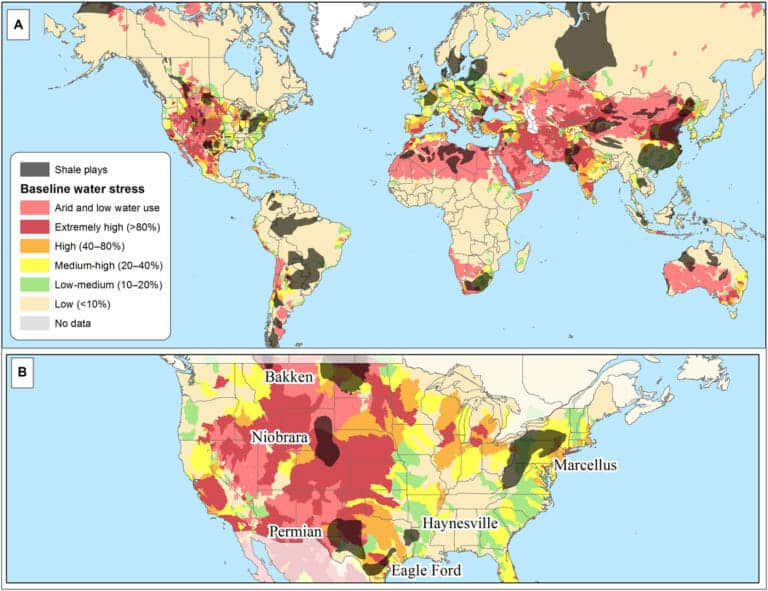Abstract
Unconventional oil and gas exploration in the United States has experienced a period of rapid growth, followed by several years of limited production due to falling and low natural gas and oil prices. Throughout this transition, the water use for hydraulic fracturing and wastewater production in major shale gas and oil production regions has increased; from 2011 to 2016, the water use per well increased up to 770%, while flowback and produced water volumes generated within the first year of production increased up to 1440%.
The water-use intensity (that is, normalized to the energy production) increased ubiquitously in all U.S. shale basins during this transition period. The steady increase of the water footprint of hydraulic fracturing with time implies that future unconventional oil and gas operations will require larger volumes of water for hydraulic fracturing, which will result in larger produced oil and gas wastewater volumes.
Introduction
The environmental impacts of a fossil fuel–powered economy have led many nations across the world to begin developing greener energy and transportation solutions. In particular, the water footprint of fossil fuel exploration and electricity production has been projected to have major environmental impacts.
It has been estimated that global water withdrawal […]
Full article: The intensification of the water footprint of hydraulic fracturing
More about how hydraulic fracturing (fracking) affects the water supply:
Penn State study: Spraying brine from drilling, fracking on roadways is hazardous
New study examines impacts of fracking on water supplies worldwide
New Mexico official: Texans are ‘stealing’ water and selling it back for fracking
Final EPA Study Confirms Fracking Contaminates Drinking Water
Hydraulic fracturing negatively impacts infant health
5 Million Gallons of Freshwater Used to Frack Just One Well



